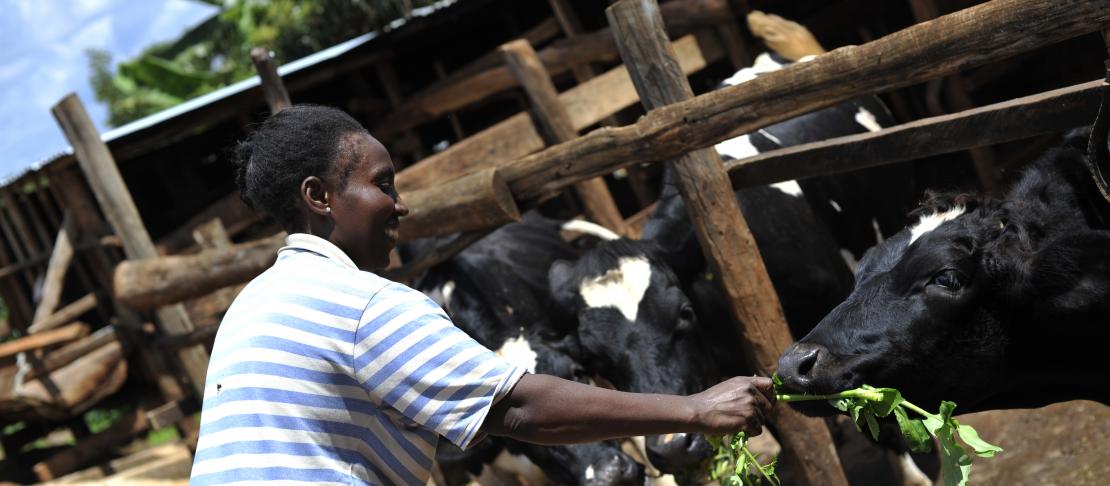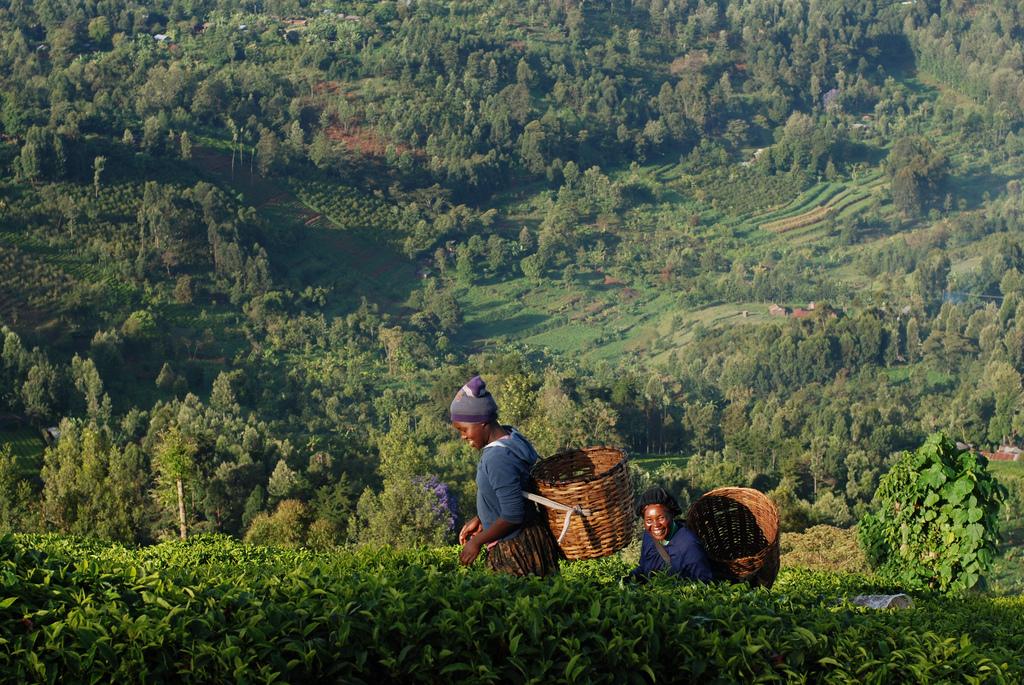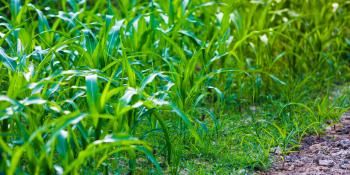Zooming in, zooming out: exploring Kenya's agricultural futures from farm to regional level

A new ambitious study has combined household and regional models with future socio-economic scenarios, to find how Kenya's highland farmers will adjust their cropping patterns due to climate change and other factors.
The role that smallholder farmers are likely to play in global food production and food security in the coming decades is highly uncertain. The uncertainties stems from the ongoing agriculture industrialization and climate change - both factors with major impacts.
At the same time, smallholder production is critical to national food security, particularly in Sub-Saharan Africa. Therefore, understanding how smallholder systems may evolve in the future is critical - if poverty alleviation and food security goals are to be achieved.
This writes a group of authors in a recently released article published in Global Environmental Change. The piece explores future changes in smallholder farming systems with a focus on the Kenyan highlands.
The team, made up of scientists from the International Livestock Research Institute (ILRI), AgriFood Research and Technology Centre of Aragon, Kenyan Agricultural Research Institute (KARI) and the CGIAR Research Program on Climate Change, Agriculture and Food Security (CCAFS), myself included, set out to study change in agricultural systems and how farmers may be influenced by such changes.
In this particular piece we investigate how smallholder agricultural systems in the Kenyan highlands might intensify and/or diversify their production in the future under a range of different scenarios. We did this by linking various socio-economic scenarios with regional and household models.

New study finds that When faced with a less available land, farmers in Kenya will in the future turn to Cash crops as a way to diversify production. Photo: Mutu
We ended up using data from almost 3,000 households to characterize different farming systems. We developed future scenarios for Kenya and impacts on the agricultural sector together with a number of different stakeholders. In addition, land-use models were used to study how different farming systems might expand or contract under these scenarios. We also simulated household decision-making based on field data to explore what strategies farmers could go for in different futures.
The results of the research provide concrete insights into adaptation strategies: for instance, we found that diversification with cash crops was a key intensification strategy when farm sizes decrease and labour costs increase.
We also found that dairy expansion is mostly viable when land availability is not an issue, mainly because fodder needs to be planted at the expense of cropland.
These types of results show the need for more integration of research on farmers’ uncertain futures at different geographic levels, because there is little information at the moment that connects what happens at the farm level to the larger-scale forces that are shaping agriculture nationally and regionally.
Decision-makers need to know what kinds of robust strategies may be suitable for different types of farming systems under a range of alternative plausible futures, and what the impacts of these strategies may be on farmers who are trying to adapt to the push-and-pull of diverse drivers of change.
We are currently building on the lessons from the study presented here to link regional and household-level models with multi-stakeholder scenarios at regional and local levels through our future scenarios activities.
Get the study: Exploring future changes in smallholder farming systems by linking socio-economic scenarios with regional and household models 2014. Herrero, M., Thornton, P.K., Bernués, A., Baltenweck, I., Vervoort, J., Steeg, J. van de, Makokha, S., Wijk, M.T. van, Karanja, S., Rufino, M.C. and Staal, S.J. Global Environmental Change (not open access).
Interested in our future scenarios work? Learn more:
- Guiding policy-makers by exploring the future of food security under climate change in South Asia
- Which way to food security? Four plausible futures for East Africa
Want to use our data and tools in your own research? Explore:
- New improved IMPACTlite tool - Provides detailed information about household composition, production systems and activities, land and labour allocation and more.
- MarkSimGCM -> an open stochastic weather generating tool
- CCAFS-Climate data portal -> now updated with downscaled, ready-to-be-used data corresponding to the IPCC’s 5th Assessment Report
Based at the Univeristy of Oxford, Environmental Change Institute (ECI) Joost Vervoort is leading the work on Future Scenarios for CCAFS. Story edited by Cecilia Schubert, CCAFS Communications Specialist.



